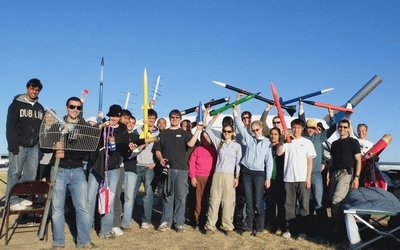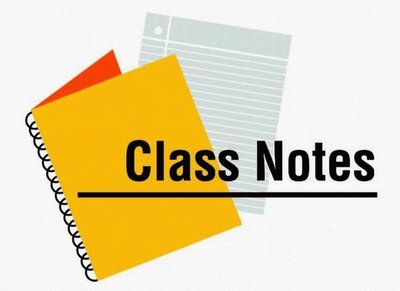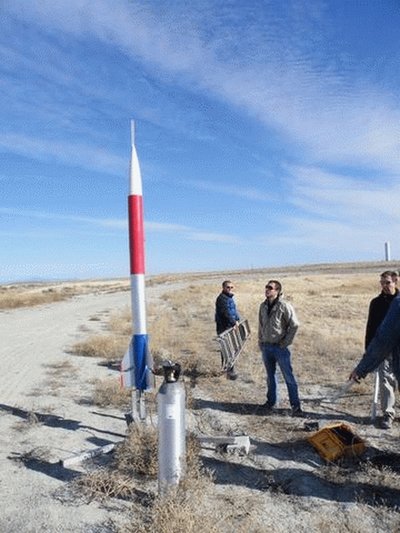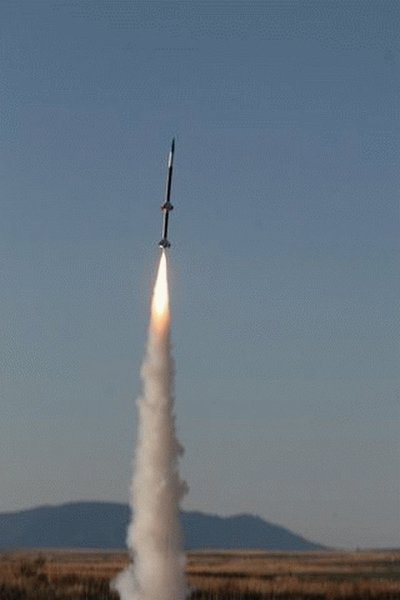November 20, 2008
Class Notes: Students’ work flies high in rockets class
Class title: ESS 490/590: Rockets and Instrumentation, taught by Professor Robert M. Winglee, chair of the Department of Earth and Space Sciences and director of the Washington Space Consortium.
Description: This is a hands-on, two-part course. In the first part, students build high-power model rockets in just five weeks and launch them in Eastern Washington. After the launches, students recover the rockets and analyze their performance and collected data back at UW. They also begin designing more advanced rockets that may travel to near-space. In the optional second part, to take place winter quarter, students will construct the advanced rockets and test them over spring break at a Nevada launch site, due to FAA height restrictions in Washington. Students who continue with the second quarter hope to break model rocket speed and altitude records.
Instructor’s views: Winglee emphasized the importance of students having hands-on experience constructing and launching rockets, as well as working with a mix of students from different disciplines.
“We had aeronautics and astronautics students who helped with the construction of the rockets, electrical engineers who helped with the communications [systems], and we had Earth and space science students who were interested in the actual application and taking of data in space,” Winglee said. “The launching of the rockets is the focus that brings all these students together.”
Winglee said the first five weeks of the course were rapid and intense, as students had to construct the rockets in time to launch on Oct. 25 — a date the Washington Aerospace Club chose about a year in advance because it fell just before the end of good weather conditions for launches in Eastern Washington. Conditions at the Mansfield launch site are generally clear with a negligible chance of rain, Winglee said. “We used kit models just because there was no time to build them from scratch,” he explained. “We broke students up into teams of about five and we launched a total of eight different rockets.”
Winglee said the smaller rockets, which were about 3 or 4 feet long, flew up to 3,000 feet and traveled at about 400 mph (nearly half the speed of sound). Two larger rockets — about 8 or 9 feet — also flew to 3,000 feet. One carried an on-board camera and the other attempted a two-stage system. Slideshows and video of all the rocket launches are available online at the course Web site.
The first part of the course was about “understanding existing technologies and science — basically it was discovering what you can do in five weeks,” Winglee said.
“The grading is based on coming together, working in a team environment, getting the rocket together, getting the [communications systems] together, being able to … recover the rocket intact, then work with the data that comes down to actually see how well it performed.
“The second part follows where we’re now designing a more advanced system that could potentially get a rocket up to almost space. Fabrication of these systems will occur next quarter.”
Unexpected experiences: Winglee and 27 students drove four and a half hours to the launch site in Mansfield, Wash., and camped the night before launching the rockets.
“We were all trying to get to bed and … this huge windstorm comes howling through,” Winglee said. “The tents are flapping, stakes are flying off, and of course you can’t fly a rocket in high winds.” The next day, however, the wind died down enough to safely launch the rockets.
Winglee said the biggest surprise for students — and for himself — was what happened during the launch of a large two-stage rocket called Teacher’s Pet. “The design of the rocket was to go fast, and it did go fast, but I didn’t quite check that we were going to cross the speed of sound,” Winglee said. “So this thing went up to 0.9 of the speed of sound (about 690 mph), and then it broke to pieces. It was considered a ‘spectacular shredding event’ where all the fins and parts of the rocket just flew off because it’s only made of plastic and cardboard and I think cardboard, apparently, doesn’t like to go at the speed of sound.”
Student views: Nathan Precup, an engineering major, said he thought the class would be interesting and fun, but that it quickly exceeded his expectations.
“It has been much more exciting than I would have imagined,” he wrote. “So far we have learned a good deal about rocket aerodynamics and propulsion, but more importantly we got hands-on experience with model rockets and engineering problems. As a part of the course structure, we are not just expected to build a model rocket and launch it, but we also have learned the steps to proper systems engineering, a very important part of every engineering problem that is not commonly taught to engineering students.”
Precup wrote that he looks forward to the second part of the course: “It is extremely exciting to actually be working on problems that are new and student-driven. We, the students, are responsible for all of the design and construction of the rocket. Of course, we rely heavily on our professors and mentors in the class, but ultimately the decisions are up to us. This sets the course far apart from most others the University has to offer.”
Student Jonathan Wrobel wrote, “Prof. Winglee really brings a lot of genuine enthusiasm and energy to the course, and helps the students become engaged in the work that the course centers [around]. I was surprised at the pace of the course … [but] Winglee would not let himself or us be daunted. The course continues to push forward for a second launch in the spring, and it is a great teamwork experience, and very hands-on. It’s a unique opportunity that is in short supply at universities.”
Reading: None. “The class is designed to get the kids out and do something,” Winglee said. “That’s the whole point.”
Assignments: Students give a presentation on one of a selection of topics, such as rocket fundamentals, launch systems or parachute deployment. They build model rockets and solve design problems involving telemetry (radio signals from rockets to ground stations), payload and aerodynamics. Students travel to Mansfield for an overnight field trip to launch and recover the rockets. They write final reports that include reviews of existing rocket technology, launch objectives, risk identification, a review of individual rocket components and integration of components into a full system, and analysis of launch data and errors.
Class Notes is an occasional column that describes interesting or unusual classes at the UW.






